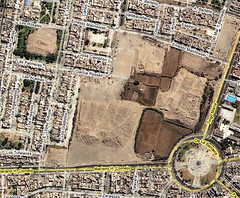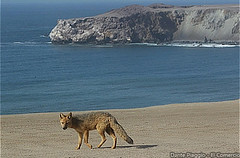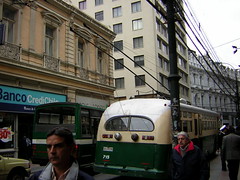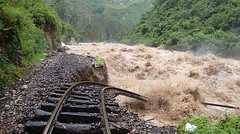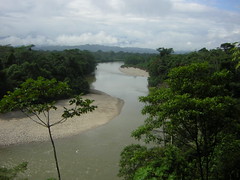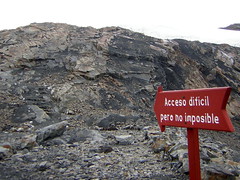Chorrillos is a southern district in Lima that runs along the beach then over and behind the Morro Solar. It’s an interesting place to walk and take photos. There are old buildings that survived the marauding Chileans, a modern malecón that looks beautiful in the sun, an ocean filled with fishing boats and a beach full of restaurants in which you can eat their catch.
Category: "Lima City Guide"
Cevichería Sonia
One of Lima’s most famous ceviche restaurants is Sonia. It is a small, humble and hidden place bellow the large rocky wall of sand that reaches out into the ocean in Chorrillos.
Puruchuco
The Inca palace of Puruchuco is one of the most impressive ruins in Lima and is one of the best restored and the first to have been done so properly. It can be found seated at the foot of a cerro in the district of Ate, at the start of the Andes mountain range.
Electric Train
During Alan García’s first term, in which he destroyed the country’s economy and fled to France with untold millions, his Government began a project to build Lima’s first mass transit system. The project failed and $400 million disappeared into an abyss. Now, with only a few kilometres of the electric train system constructed, there is talk of
finishing it.
“Cuerazos Peruanos” – Basta de Racismo
Watching TV or looking at the advertisements across Latin America, you might notice something strange, particularly in countries like Peru. The models and actors look nothing like the majority of the population; they are overwhelmingly fair skinned whilst the population isn’t. In Latin America, and in Perú, there is an unfortunate correlation between what is considered beautiful in a person and the amount of European blood they have.
Terror in the Middle and Upper Classes (& Bats in Miraflores)
It’s been something I wanted to write about for a while, but didn’t know how to approach it or even really what to say. It isn’t even a strictly Peruvian trait and I think it happens in much of the world where extreme inequality exists, such as the USA for example, where thanks to TV we see the middle and upper classes sealing themselves off from the wider world and living in fear of it. In Europe the rich and poor often live within walking distance (yes, people walk to places there), and this culture of fear is far less wide spread, in my opinion.
But I’m not in the USA or Europe, so I’ll stick to attempting to describe the Peruvian or even Limeño version of this phenomenon.
Rimac
Cerro San Cristobal overlooks the historic district of Rimac, the other side of the river from the city centre. Never a very wealthy district, it’s first inhabitants were the indigenous from the region, the black population and the poor of the Spanish immigrant community. It became one of the most vibrant parts of the city and the centre for Lima’s entertainment – so much so that the rich of Lima often frequented it’s creole bars and restaurants, not forgetting its bullring. By the 18th it was the bastion of creole culture in Peru and the centre for the arts, music and food. Now with its buildings on the verge of collapse and memories of the Limeños of old fading, it was time to visit this important part of Lima’s history.
Alameda de los Descalzos
The Alameda, in the heart of the northern district of Rimac, north of the river Rimac and the centre of the city, was originally built in 1611 by the Marquis de Montesclaros.
Later in 1770 Viceroy Manual de Amat refurbished it, adding donated fountains from the chief of Lima’s bullfighting ring.
Glimpse of Surco’s past
In the clean ordered urban streets of the Limeño district of Santiago de Surco there is a living glimpse of it’s past, from a time of farms and plantations, when the urban sprawl hadn’t quite reached quiet little Surco.
Los Barrios Altos
Fine architecture, grand buildings, horse drawn carriages ferrying around the rich. This affluent area is adjacent to the city centre laid out by the conquistador Pizarro and dates back to not long after he founded it.
Quinta Heeren
The Quinta Heeren is a residential housing development that was built between 1888 and 1930. The first such large scale development of its kind in Peru, it was the brainchild of Oscar Heeren, a German businessman and diplomat. On the 30,000 square metres of land on the edge of the city (now a good few kilometres inside it!), in grand style, Heeren built a self-contained community, with the open space of a main square, a public garden and even a small petting zoo. It was very suburban.
Plaza San Martin, Central Lima
The buildings in the plaza seem to have been cleaned or repainted as part of the restoration of central Lima.





